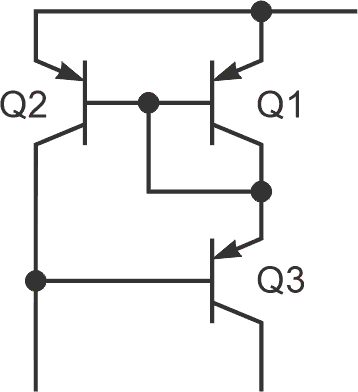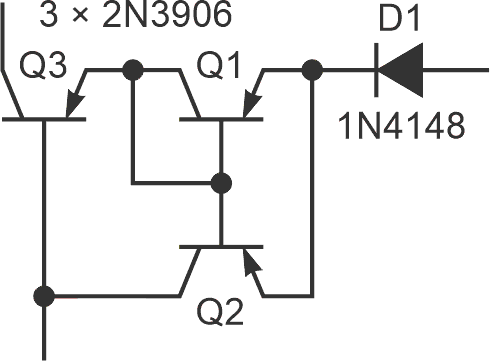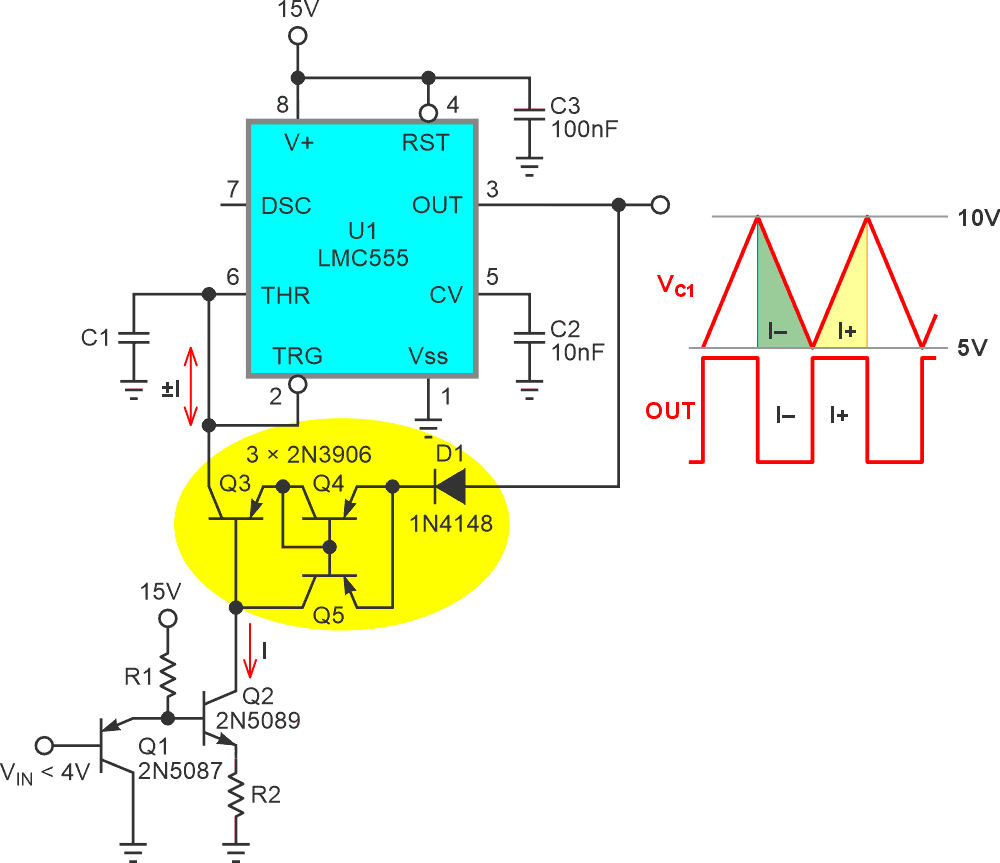Recently (5/21/25), I published a Design Idea (DI) describing a bidirectional current mirror using just two transistors and a diode, “A two-way mirror—current mirror that is” (Ref. 1).
That circuit works well in some applications, like the one shown in the DI itself, but it nevertheless has limitations due to various error-introducing effects, some of which are described in (Reference 2).
One of the more important factors of these is the “Early effect”, that kicks in to cause significant current imbalance when the voltage drop across the mirror becomes more than a couple of volts. Happily, a fix for the Early effect was devised back in 1967 by George R. Wilson, an IC design engineer at Tektronix. Wilson’s simple yet ingenious fix consisted of adding a third transistor to the basic current mirror, Q3 in Figure 1.
 |
|
| Figure 1. | The Wilson mirror improves accuracy despite Early-effect by adding Q3. |
Due to Q3, the difference in voltage drop across the active mirror transistors Q1 and Q2 never differs by more than one VBE, which reduces Early effect error to less than 1%. Figure 2 shows a variation of the basic two-sided current mirror incorporating Wilson’s accuracy-enhancing extra transistor.
 |
|
| Figure 2. | A two-way current mirror with Wilson enhancement. |
This advantage is exploited in the Figure 3 triangle-wave oscillator to achieve good T-wave symmetry despite as much as 10v being applied across the mirror.
The Wilson mirror is the better choice for Figure 3, but it isn’t always the superior option. That’s because the extra transistor adds an extra VBE to the minimum voltage drop when the mirror is active. This is no problem for Figure 3 because of its operation from 15v, but would be a deal breaker in the previous DI (Ref. 1) with its 5v-powered oscillator. Luckily, for the same reason, Early already wasn’t much of an issue there.
Courses for horses?
References
- Woodward. Stephen. "A two-way mirror—current mirror that is."
- Chapter 11: The Current Mirror
